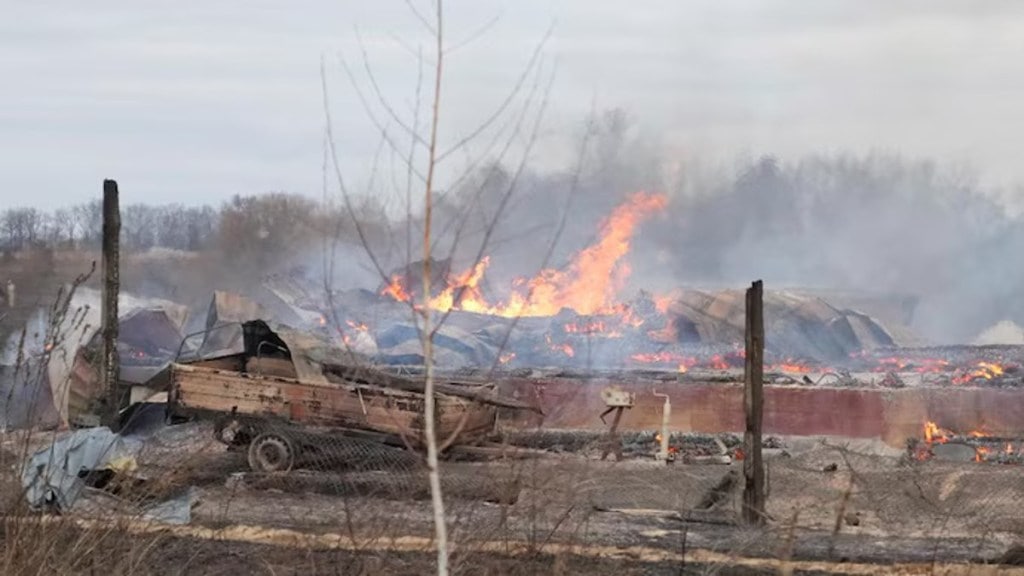The year 2024 marked a grim milestone in global geopolitics, with armed conflicts proliferating at an alarming rate. From Ukraine to Sudan, Gaza to Myanmar, the world has become a theatre of unresolved disputes and escalating violence. With over 50 nations embroiled in active conflicts, the economic toll of these crises has created ripple effects far beyond the borders of war-torn regions.
The Armed Conflict Location and Event Data (ACLED) reveals a 25% surge in political violence globally in 2024, with 223,000 fatalities recorded and one in eight people directly exposed to conflict. These figures highlight not only the human cost but also the economic strain borne by nations already teetering on the edge of collapse. As conflicts evolve, their economic consequences are reshaping regional and global dynamics in unprecedented ways.
The Economic Toll of Modern Warfare
Wars have historically devastated national economies, but the interconnected nature of today’s global economy magnifies their impact. Ukraine, locked in a protracted struggle against Russian aggression, has seen its GDP contract by 29%. The energy infrastructure targeted in coordinated attacks has left millions without power, further exacerbating an already dire economic situation. Meanwhile, the ongoing blockade and aerial bombardments in Gaza have resulted in estimated losses exceeding $4 billion, crippling any semblance of economic recovery.
Sudan offers a stark example of a nation in freefall. Since April 2023, the civil war has displaced over 12 million people, disrupted agricultural production, and pushed half the population into acute food insecurity. The war’s regional spillover, particularly in Chad and South Sudan, is overwhelming local economies already burdened by refugee influxes.
In Myanmar, the economic repercussions of the military coup in 2021 continue to reverberate. The country has devolved into a patchwork of conflict zones, with armed groups vying for control over natural resources. The resulting instability has stifled foreign investment and trade, relegating Myanmar to economic stagnation.
Global Ripples: The Conflict-Driven Economy
Beyond the immediate devastation, these conflicts are reshaping the global economic order. Energy markets have been particularly volatile, with the war in Ukraine spiking oil and gas prices in Europe and beyond. Food insecurity has also escalated, as disruptions in Ukrainian and Sudanese agricultural exports ripple through global supply chains. The Sahel, a key region for global counterterrorism and economic partnerships, faces increasing instability, threatening resource extraction and trade routes critical to European and African economies.
Humanitarian aid, often underfunded, has become a pivotal economic variable. The United Nations estimates that 305 million people will require assistance in 2025. Yet, donor fatigue and competing priorities are straining the international community’s capacity to respond. This funding gap perpetuates a vicious cycle: inadequate aid fosters deeper economic despair, fueling further instability.
The Geopolitical Dimensions of Conflict
The intensification of global conflicts also reflects shifting geopolitical alignments. In the Middle East, the war between Hamas and Israel has drawn regional actors into a polarized standoff. Iran’s support for proxy groups, coupled with Saudi Arabia’s cautious engagement in diplomacy, highlights the economic stakes tied to resource access and security guarantees.
South Asia, a region often overshadowed by larger global crises, has also witnessed rising tensions. Speculations regarding Bangladesh’s alleged preparations for military action against India have raised concerns about an unanticipated conflict in one of the world’s most densely populated regions. While unverified, such developments underscore the fragility of peace in areas of historical contention.
Toward a New Economic Paradigm
The economic impact of conflicts is no longer confined to war zones; it is a global phenomenon. The interconnectedness of financial systems, energy markets, and supply chains ensures that violence anywhere is felt everywhere. This new reality demands innovative approaches to conflict resolution and economic resilience.
First, targeted investments in conflict-prone regions could preempt instability. Infrastructure projects that integrate local economies into global trade networks, coupled with job creation initiatives, can serve as deterrents to violence. Second, international frameworks must adapt to ensure that humanitarian aid is not just reactive but preemptive, addressing the root causes of displacement and deprivation.
Finally, diplomacy must prioritize economic interdependence as a tool for conflict prevention. The European Union’s reliance on Ukrainian agricultural exports and Africa’s energy potential highlight the mutual benefits of stability. Aligning these economic imperatives with security strategies could redefine how nations engage with fragile states.
Will a New Year See Peace?
As 2025 begins, the specter of conflict looms large over the global economic landscape. The interplay between wars and economies is as old as civilization itself, but today’s challenges are uniquely interconnected. Whether in the streets of Kyiv, the camps of Darfur, or the alleys of Gaza, the cost of conflict is borne not only by those directly involved but by a world increasingly shaped by its fallout. Addressing this requires bold, collective action that balances immediate relief with long-term economic vision—an endeavor as complex as it is essential.
